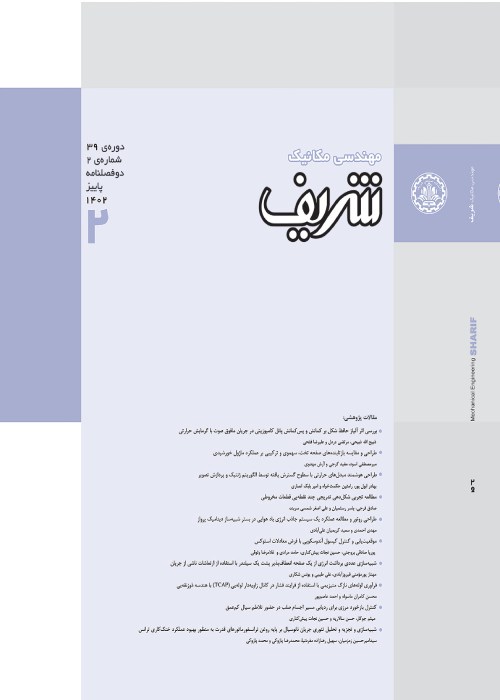EFFECT OF CURVED CRACK FRONT ON STRAIN ENERGY RELEASE RATE OF UNIDIRECTIONAL DCB SPECIMENS
Delamination is a typical fracture mechanism in fiber reinforced composite laminates that occurs due to low interlaminar strength. Some well-known sources of delamination under different loadings are free edges, cut out, low-velocity impact and fabrication defects. This damage may considerably reduce global stiffness andrn strength, leading to a catastrophic structure failure. Therefore, characterization of delamination resistance, based on fracture mechanics, is of great importance in engineering design. Regarding the experimental point of rnview, the double cantilever beam (DCB) specimen has been widely used to measure mode-I critical strain energy release rate .rnrnMany factors may affect the strain energy release rate of a composite DCB specimen. Among these factors, initial crack length has a significant effect on the interlaminar fracture toughness of unidirectional, double cantilever beam (DCB) specimens. Crack propagation is not self-similar in composite DCB specimens, due to bending-bending coupling. As a result, straight crack front changes to thumb-nail shape during the propagation.rnThe difference between analytical and experimental results is related to the use of critical load or displacement during data reduction. In this study, at first, the effect of using critical load, critical displacement and critical load-displacement is examined in experimental calculation of .Results show that using only critical load underestimates initial fracture toughness, whereas using only critical displacement overestimates it. rnAfterwards, the influence of crack length correction on fracture toughness is experimentally investigated. The proposed relations, by other researchers, for crack length correction, are assessed by experimental results. Results showed that crack length correction, based on the Timoshenko beam on a Winkler elastic foundation model, are in good agreement with experimental ones. Finally, engineers can predict the value of a unidirectional DCB specimen with good accuracy using a simple beam theory with correction in initial crack length.
- حق عضویت دریافتی صرف حمایت از نشریات عضو و نگهداری، تکمیل و توسعه مگیران میشود.
- پرداخت حق اشتراک و دانلود مقالات اجازه بازنشر آن در سایر رسانههای چاپی و دیجیتال را به کاربر نمیدهد.



